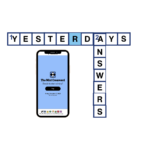If you’re a fan of the New York Times Crossword puzzles, you might have come across the “lab report nyt crossword.” Solving these types of crosswords can be tricky, but with a few tips, you can get better at them and enjoy solving them more. This post will guide you through strategies for tackling the lab report crossword and give you insights on how to approach these puzzles step by step.
In this blog post, we’ll explore the common strategies used by crossword enthusiasts to crack the lab report nyt crossword. Whether you’re a beginner or an experienced solver, you’ll find these tips helpful and easy to follow.
Why the Lab report nyt crossword Is a Fun Challenge
Solving the “lab report nyt crossword” isn’t just about filling in the blanks—it’s about the thrill of figuring out tricky clues. Many crossword fans love the challenge because each puzzle presents something new, whether it’s an unfamiliar scientific term or a clever clue that makes you think. It’s this sense of accomplishment that makes solving crosswords so rewarding.
Not only does it test your knowledge of science, but it also encourages you to be creative. As you solve, you might discover fun connections between words and ideas. You may even find yourself learning more about scientific concepts, making the process both educational and enjoyable. It’s like combining a brain workout with a mini science lesson!
What is the Lab report nyt crossword?
The “lab report nyt crossword” is a type of crossword puzzle found in the New York Times. It’s known for its scientific and academic-themed clues. These puzzles can involve terms from chemistry, biology, physics, and even medicine. They are designed to test your knowledge of both general topics and more specific scientific terms.
Understanding the structure of the lab report nyt crossword is key. Unlike other crosswords that focus mainly on everyday vocabulary, the lab report crosswords are unique because they use specialized words from the lab environment. This makes it both a challenging and exciting puzzle for fans who enjoy scientific topics.
Tips to Solve the Lab report nyt crossword Puzzle

Solving the lab report nyt crossword can be tricky if you don’t know the right strategy. Here are some useful tips to help you solve it with ease:
- Start with the easier clues: Focus on the simpler clues that you can answer without too much thought. This helps you fill in some of the grid and gives you letters for the harder clues.
- Look for familiar patterns: Many crossword puzzles have repeating words or letter combinations. If you’re stuck, try to think of common scientific terms that fit the letter slots.
- Use crossword-solving websites: Sometimes, you might need a little help. Websites like Crossword Solver can give you suggestions for difficult clues based on the letters you have filled in.
- Practice regularly: The more you practice solving the lab report nyt crossword, the better you’ll get. Over time, you’ll become familiar with common words and phrases used in these puzzles.
Common Clues in Lab report nyt crossword and How to Crack Them
When solving the lab report nyt crossword, you might come across specific types of clues that can stump you. Here are some of the most common ones and tips for cracking them:
- Scientific Abbreviations: You might see abbreviations like “DNA” or “pH.” Make sure you are familiar with common science acronyms.
- Lab Equipment Names: Clues might ask about lab tools like “beaker” or “microscope.” Try to think about what you’d use in a science experiment.
- Scientific Terms: Terms like “osmosis,” “molecule,” or “reaction” are often used in the lab report nyt crossword. Brush up on basic science concepts to recognize these terms easily.
How to Improve Your Crossword Solving Speed
If you want to solve the lab report nyt crossword faster, here are some tips:
- Solve in short bursts: Don’t try to solve the entire crossword puzzle in one go. Take breaks, and come back to it later with fresh eyes.
- Use a pencil first: In case you’re not sure about an answer, use a pencil so you can erase and try again without messing up the grid.
- Build your vocabulary: Read scientific articles or books. The more words you are familiar with, the easier it will be to solve tricky clues.
Why the Lab report nyt crossword Is a Fun Challenge

The lab report nyt crossword is not just for science geeks—it’s fun for everyone! Solving this type of crossword can be a great way to improve your vocabulary and learn more about the world of science.
Moreover, it’s a great exercise for your brain. Crossword puzzles help with memory, logic, and problem-solving skills. Even if you’re not studying science, tackling the lab report crossword will make you think in new ways, which is always a good thing.
Conclusion
Solving the lab report nyt crossword may seem hard at first, but with practice, you can get better. The key is to start slow, learn new terms, and use the right strategies. Don’t forget to keep practicing regularly—it’s the best way to improve your crossword-solving skills.
FAQs
Q: What is a lab report nyt crossword?
A: It’s a special type of crossword puzzle in the New York Times with clues related to science, such as chemistry, biology, and physics.
Q: How do I solve a lab report nyt crossword?
A: Start with easy clues, look for patterns, use crossword solver websites, and practice regularly.
Q: What are common clues in a lab report nyt crossword?
A: Expect clues related to scientific terms, lab equipment, and abbreviations like “DNA” or “pH.”
Q: Why is solving the lab report nyt crossword fun?
A: It’s a great way to learn new science terms and improve your problem-solving skills.
Q: Can beginners solve the lab report nyt crossword?
A: Yes! With practice and patience, even beginners can solve it over time.


